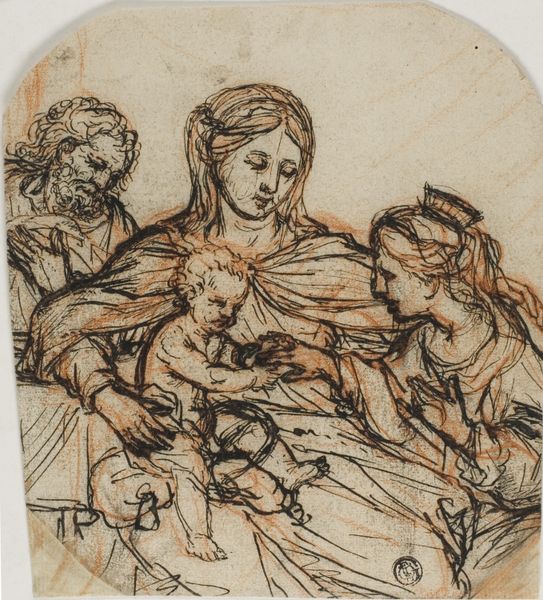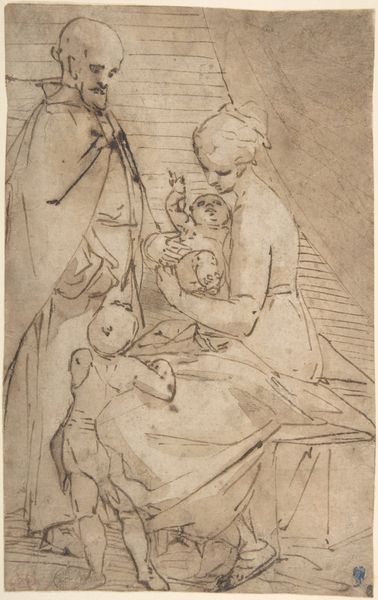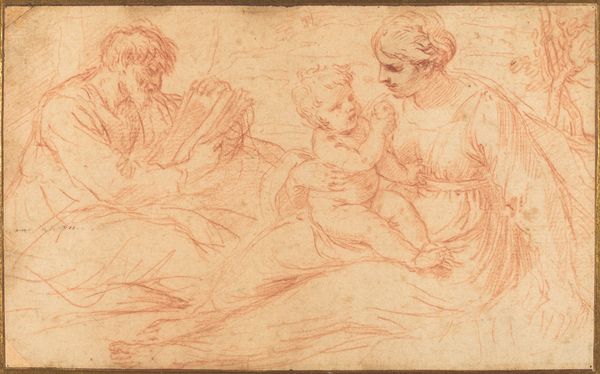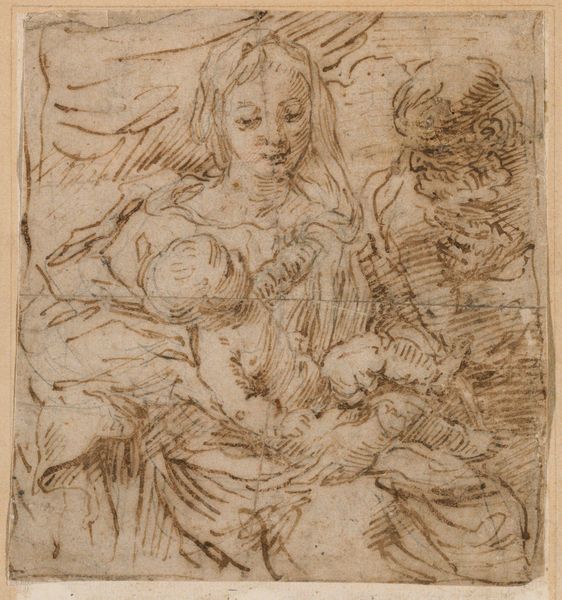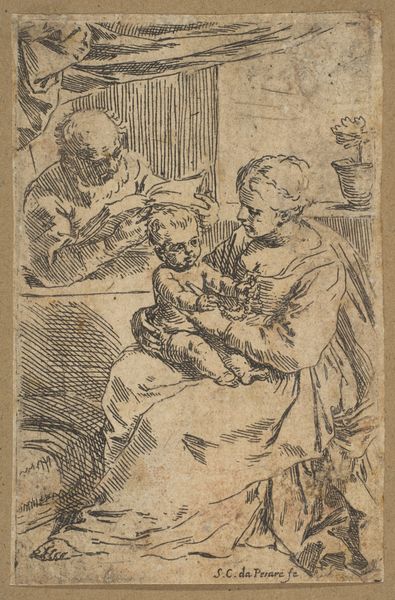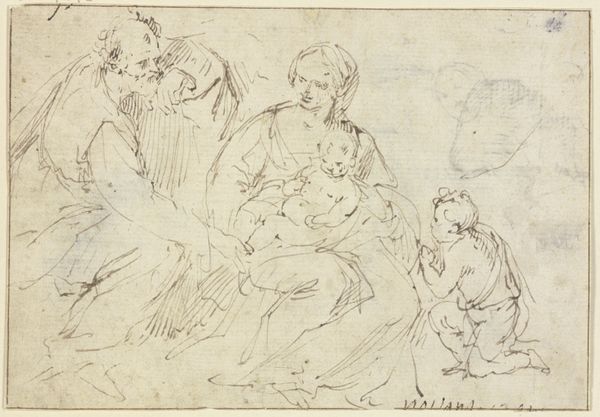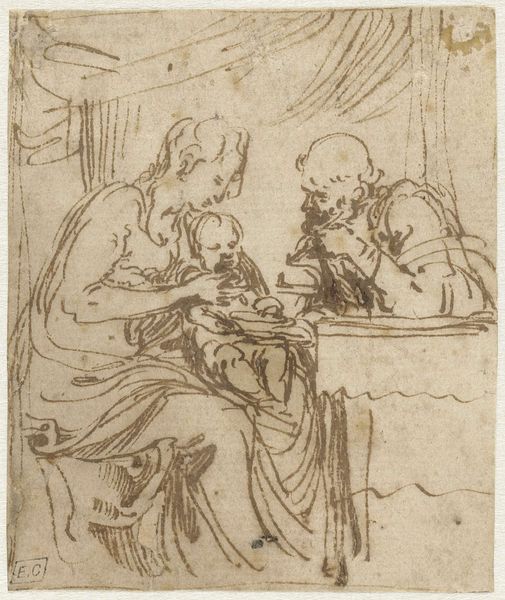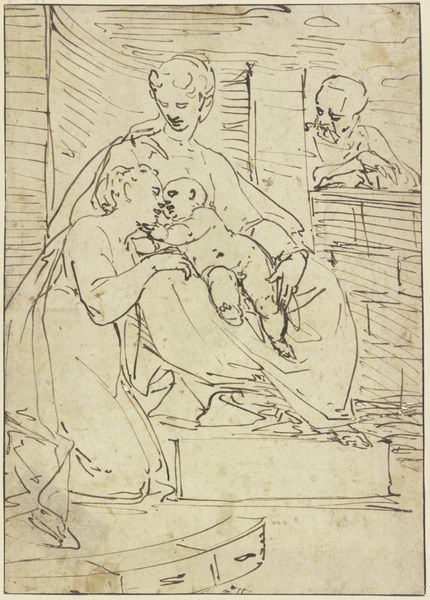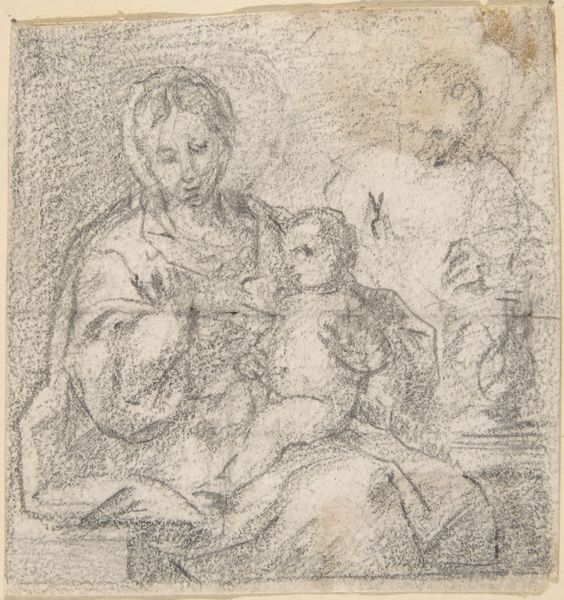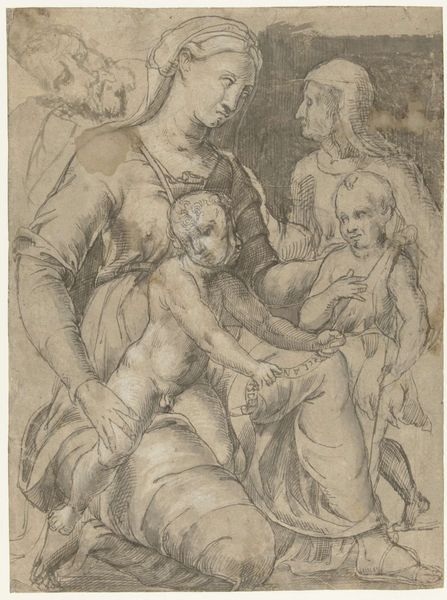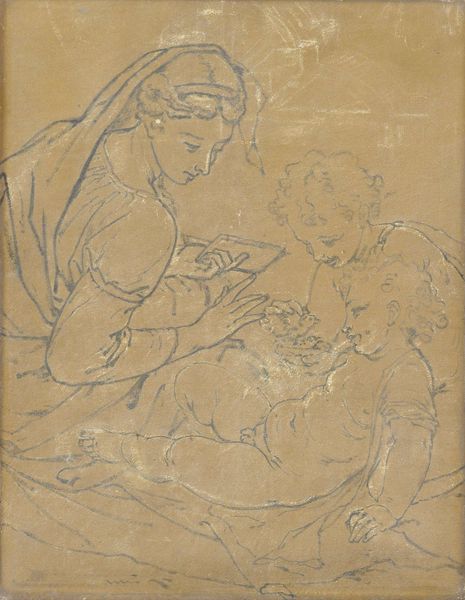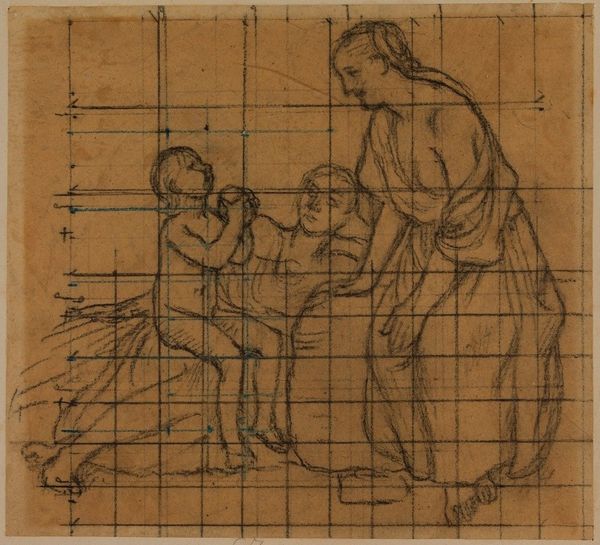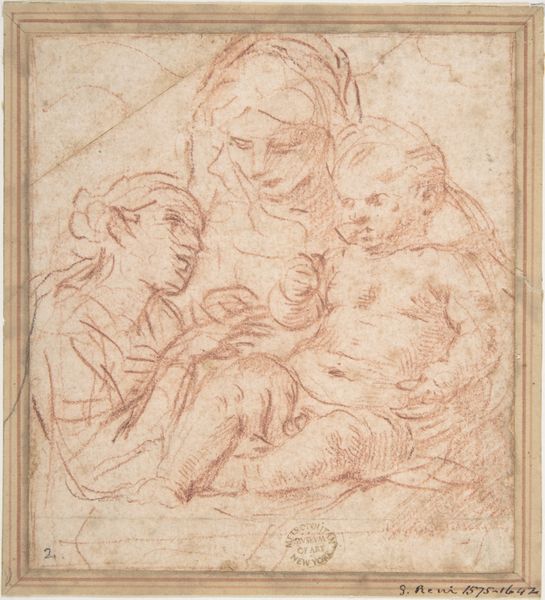
Madonna and Child with Saint Elizabeth and the Infant Saint John the Baptist c. 1600 - 1635
0:00
0:00
drawing, coloured-pencil
#
portrait
#
drawing
#
coloured-pencil
#
landscape
#
figuration
#
coloured pencil
#
italian-renaissance
#
miniature
Dimensions: 3 1/2 x 2 9/16 in. (8.89 x 6.51 cm) (sheet)8 3/16 x 7 5/16 in. (20.8 x 18.57 cm) (outer frame)
Copyright: Public Domain
Curator: Here we have "Madonna and Child with Saint Elizabeth and the Infant Saint John the Baptist," a drawing attributed to Giovan Paolo Pisani, dating from around 1600 to 1635. It's done with coloured pencil and can be seen here at the Minneapolis Institute of Art. Editor: The first thing that strikes me is how delicate and raw it feels, almost like a fleeting thought captured on paper. The use of coloured pencil gives it a softness, a kind of warmth even, despite the stark lines. It appears the artist used what was readily available, which suggests something about the culture in which this work was created. Curator: Indeed. The sketch-like quality allows us to peer into the artist’s process, capturing a sacred familial moment. It emphasizes the tenderness between mother and child. Note how the halos are only suggested. This lends intimacy and accessibility to figures typically presented as distant icons. Editor: It’s intriguing how the presumed availability of red chalk has dominated the feel of this drawing, and to see the interplay of its earthiness contrasted with these traditional figures. Is this sketch meant to highlight the more material aspects of the family and challenge the idealized forms typically used at the time? Curator: I find the composition draws on earlier, highly symbolic visual traditions, positioning the Madonna as the literal and spiritual center of the work, emphasized by the encircling gaze of Elizabeth and John the Baptist. The children, still in process of definition, look up to Mary and their features already point to their calling as saints. Editor: Looking at the work through this lens, the economy of means—the paper, the pencil strokes, the limited color—emphasizes the tangible reality of the family unit in contrast to the grandiose imagery often linked to religious themes. Curator: Yes, perhaps the medium served as an artistic choice in this piece, contrasting a grand moment of rebirth with what is also a humble start. Editor: It’s curious how, in using the earthiest materials, a religious image transcends class or era by speaking to the material conditions of both then and now. Curator: In viewing this piece, one might then contemplate the way artists find unique tools and accessible approaches, to address faith and culture, still making artworks with lingering significance today. Editor: I am reminded of the simple realities in an era defined by religious patronage. Examining it reminds us to reconsider what assumptions about how that process works.
Comments
minneapolisinstituteofart almost 2 years ago
⋮
This study of the Madonna and Child with saints make for an interesting comparison with a work on loan from an important private collection. The two share not only subject matter, but many significant graphic qualities as well-vague, rough underdrawing in chalk, followed by bold, incisive penwork to model the figures, similar "pentimenti" (second thoughts/changes) to alter the Madonna's head and gesture, and identical abbreviated notations to describe the figures' eyes, noses, and hands-not to mention the similar physiognomic types found in the two sheets. The larger drawing on loan has long been accepted as a work by Alessandro Casolani, the successful 16th-century Sienese artist. A spirited and prolific draftsman, Casolani produced countless, inventive compositional drawings. His nimble pen moved rapidly when he sketched and changed course frequently to keep up with the surge of ideas. He returned to the subject of the Madonna and Child with saints again and again in his paintings and drawings, never repeating a pose, always searching for a new compositional scheme and solution. The McCrindle drawing, which came to the museum as the work of an anonymous Italian master, might, in fact, also be by Casolani.
Join the conversation
Join millions of artists and users on Artera today and experience the ultimate creative platform.
